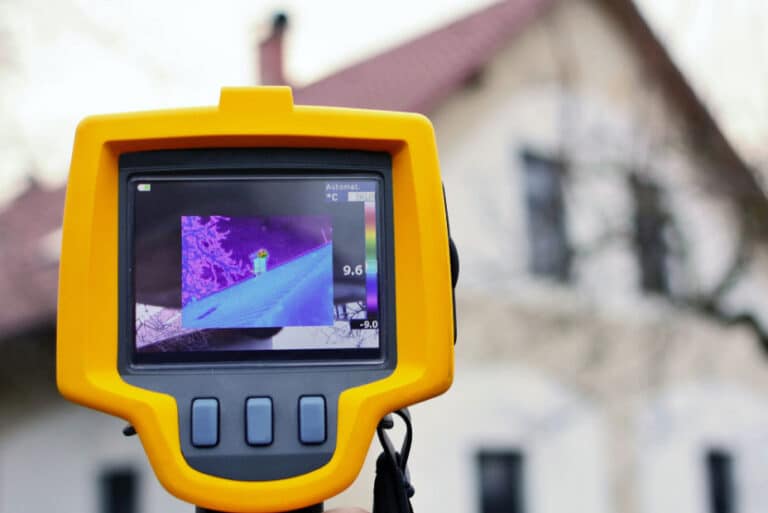Electrical commissioning is a critical step in ensuring that electrical systems meet the design and operational requirements set by project owners. This process involves a thorough review and testing of all components, from power supply to control schemes. By reading this piece, you’ll dive deep into what makes electrical commissioning essential for any project involving electrical work.
Exploring the electrical commissioning checklist, you’ll see how it simplifies setting up, adeptly handles potential issues, and guarantees adherence to regulations. Moreover, we’ll explore the importance of adhering to national electrical codes to prevent hazards like short circuits or arc flashes.
Lastly, witness testing’s role will be demystified; showing its significance in verifying equipment performance under real-world conditions before full integration. These insights aim to equip readers with knowledge on creating safer, more efficient building systems through effective commissioning practices, with Crescent Construction Services leading the way in ensuring top-tier electrical commissioning for your projects.
The Fundamentals of Electrical Commissioning
How do we define the intricate process of ensuring electrical setups are not only conceived and put into place but also scrutinized and utilized as per the specifications laid out by those who commission them?
Study after study shows that early failures of power systems are often caused by design or installation problems.
This stage involves not just grasping the functionality of building system elements but also meticulously comparing them to project specifications and blueprints. The ultimate goal is to validate that all electrical equipment performs harmoniously within its intended environment.
Importance of Early Engagement
Engaging with a commissioning provider from the pre-design phase can significantly reduce costs associated with rework and delays. This proactive approach allows for the identification and rectification of potential issues at an early stage, making sure everything from power supply to control schemes aligns perfectly with what was envisioned in the initial energization plans.
By bringing everyone together early on, from the folks running the show to those laying down the bricks and wiring up systems, we’re making sure that everything ticks just right according to both what’s legal and what the person footing the bill wants. By doing so, it minimizes risks related to safety hazards like short circuits or arc flashes thereby enhancing overall quality assurance throughout every step of the construction journey.
Learn more about effective strategies here.
Creating an Effective Electrical Commissioning Checklist
An electrical commissioning checklist is crucial for ensuring that electrical systems are installed, tested, and operated according to the highest standards. This tool plays a significant role in risk management by identifying potential issues before they become major problems.
Purpose and Benefits
Spanning initial examinations to ultimate validation, the checklist covers all bases. It serves as a roadmap for commissioning teams, guiding them through each step of the process with precision. Following this structured method allows groups to sidestep usual snags in electrical setups, like flaws in planning or slip-ups during the installation phase.
Moreover, compliance with standards is not just about ticking boxes; it’s about safeguarding the integrity of power supply systems against risks like short circuits or arc flashes. Utilizing the checklist, each part is verified for adherence to both nationwide electrical regulations and unique project stipulations.
Ensuring Compliance with National Electrical Codes
Navigating through mandatory requirements for safe installations is not just about ticking boxes. Delving into this realm goes beyond mere compliance; it’s a complex ballet intertwining the elements of design, safeguarding measures, and practical utility. The national electrical codes compliance forms the backbone of this process, ensuring every phase of electrical commissioning adheres to a set standard that guarantees safety and efficiency.
Electrical Code Adherence
Electrical Code Adherence isn’t merely a suggestion; it’s an essential part of any project management strategy in the realm of power generation. These standards are meticulously crafted to minimize potential hazards like short circuits or arc flashes—threats that can derail projects and endanger lives.
Navigating through mandatory requirements for safe installations.
Professionals in the field of commissioning services employ a mix of rigorous review against design documents and intricate acceptance testing methods to align with these exacting standards. This ensures all installed electrical systems—not only meet but exceed—the operational needs they’re designed for while strictly following prescribed safety measures.
The Role of Witness Testing in Commissioning
In the realm of getting electrical systems up and running, having an expert there to observe and confirm that everything’s working as it should during witness testing is crucial. Through this methodical approach, we verify the functionality of each device in authentic scenarios before its full assimilation into the edifice’s energy network. But why is this so crucial? It boils down to the reality that without thorough witness testing, potential issues could go unnoticed until they cause significant problems.
Key Aspects of Witness Testing
One key aspect of witness testing involves establishing clear criteria. These guidelines are essential for evaluating whether electrical systems meet project requirements and design specifications effectively. These guidelines act as a benchmark for gauging the systems’ efficacy, guaranteeing they align with both the envisioned design and practical demands.
Enhanced Methodologies and Compliance
In Crescent Construction Services, our approach to witness testing includes detailed documentation through every step—right from initial energization to full-scale operation. By meticulously adhering to national electrical codes during commissioning activities, we aim not just for compliance but for excellence in safety and functionality.
Conclusion
Electrical commissioning unlocks the door to system reliability and safety. It’s about getting every piece of electrical gear to play nice, from power supply down to control schemes.
Dive in early. The sooner a commissioning team gets involved, the smoother things go. Less rework, fewer costs.
Checklists are your best friend. They keep track of everything that matters—ensuring nothing slips through the cracks during installation or testing.
Safety isn’t negotiable; adhering to national electrical codes is crucial for preventing nasty surprises like short circuits or arc flashes.
Last but not least, witness testing is key—it proves systems perform under real-world pressures before they’re fully unleashed.
In wrapping up: Keep these pillars in mind and you’ll steer clear of trouble while powering up success with electrical commissioning at your back!
Let Crescent Construction Services be your trusted partner – Contact us today.





